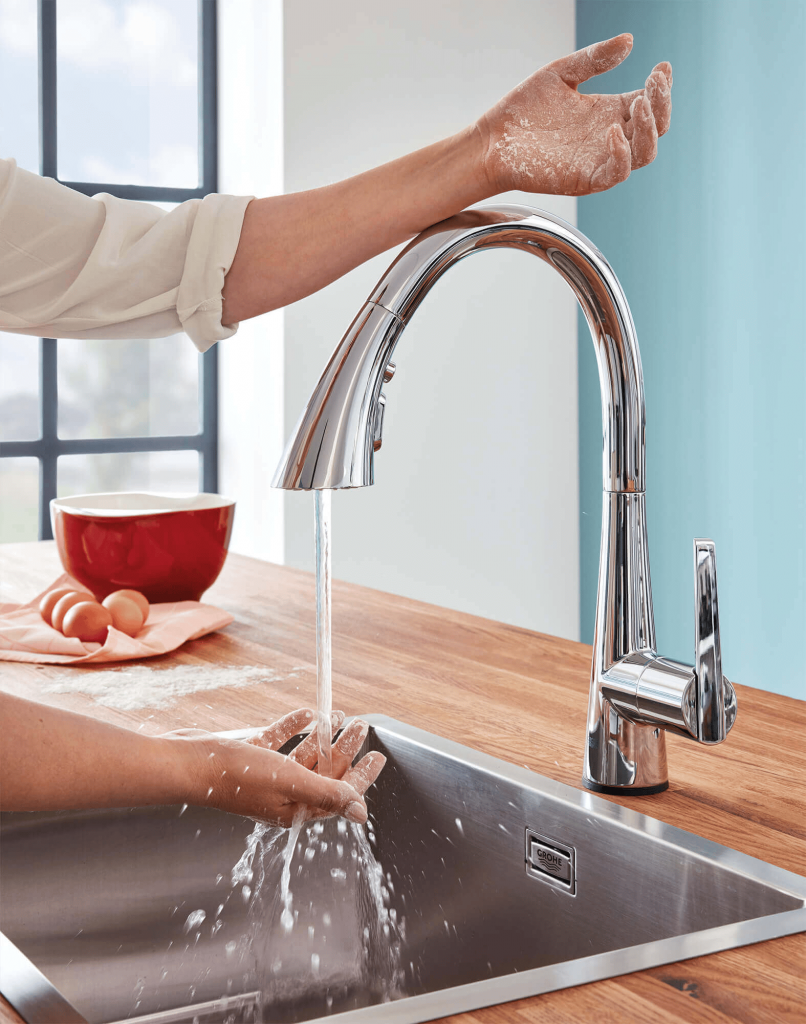When it comes to faucets, they can be separated into two categories: touchless and touch. The debate between the two is age-old, as well as heated. As with all things, however, it’s wise to know the differences between them so you can select the right one for your home.
Do Touch-touchless Faucets Need Electricity or Power?
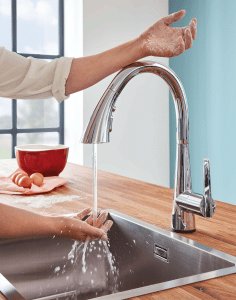
Image Source: Grohe
Some touchless faucets are battery powered and come with a battery charger so they don’t rely on the power grid or your home’s wiring at all. They work thanks to the use of infrared technology, which allows them to sense when your hands are in close proximity and then turn on automatically.
Touchless faucets are ideal for those looking for a more convenient way to wash their hands. They also help conserve water by limiting the amount that you use while washing your hands.
Touchless faucets are much more hygienic than traditional faucets, since they eliminate the need to touch any part of the faucet handle. The only thing you need to do is put your hands underneath the sensor area, and then wait for the water to flow.
How are Touch – touchless Faucets Powered?
Touchless faucets are powered by batteries, which can be replaced when they eventually wear out. The battery is usually located near the base of the faucet and can be accessed by removing a screw or two.
Touchless faucets that use infrared technology work in a similar manner to motion sensors in security systems. When your hands approach the sensor, it detects your presence and activates the water flow.
Touchless faucets that use capacitive touch sensors rely on an electric field that’s generated between two plates inside the faucet body. One plate is attached to your hand, while the other is attached to a metal spring coil inside the body of the faucet.
Motion Sensor
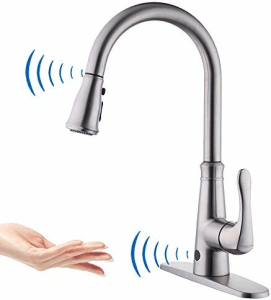
Image Source: Amazon
Motion sensors are the most common type of sensor used in touchless faucets. They help detect when your hands are under the spout and automatically turn the water on. If you have an older model that doesn’t have a motion sensor, you can buy one separately and install it yourself.
The sensors work by detecting changes in infrared light waves. When your hands pass under them, they reflect infrared light back at the sensor, which causes it to trigger its response. In addition to turning water on, some models also adjust water temperature automatically based on how far away your hand is from the faucet.
Solenoid Valve
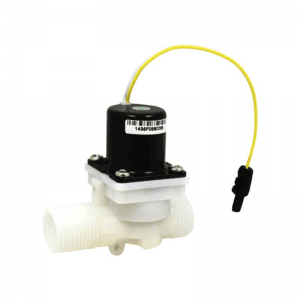
Image Source: Best touchless faucet
A solenoid valve is an electromechanical device used to control fluid flow through a pipe or along a cable. It uses an electromagnet to control a plunger or diaphragm, which acts like a check valve or one-way valve.
When current is applied to the solenoid coil, it attracts the magnetic core inside and moves it against a spring (or pressure). The spring pushes back and opens up an opening in the valve body so it can allow fluid through. When there isn’t any current flowing through the coil, it releases its hold on the core so that no further fluid can pass through.
How Long Do Batteries Last In A Touchless Faucet?
The battery life on a touchless faucet is, typically, about three years. It should last longer if you use it less often, and less if you use it more often. The battery can be replaced without much difficulty. You won’t have to call in a plumber unless you want to replace the entire faucet with a new one that has already been installed.
Touchless Faucet Battery Replacement
The types of batteries in a touchless faucet can vary. Some models use two AAA batteries, while others use a rechargeable lithium ion battery. The latter type is more expensive but also lasts longer and is easier to replace.
The batteries are located inside the base of the faucet and are accessed by removing the cap on the bottom. The cap can be removed with a screwdriver or coin, depending on the model.
Plug Transformed Faucet
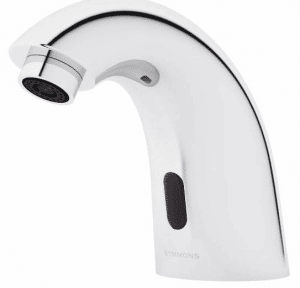
Image Source: Andrew Sheret
The plug is a simple device that can be found in nearly every home. It may not seem like much, but if you have a leaky faucet, it can cost you money and damage your sink over time. The plug is designed to keep water inside the faucet and prevent it from leaking out.
When you turn on your faucet, a small rubber washer seals the hole where the spout meets the base of the faucet. As you turn off your faucet, the plug seals off any remaining water inside your sink. If this plug isn’t working properly, then water will continue to drip out of your faucet even after you’ve turned it off.
Fixed Power Supply Faucet
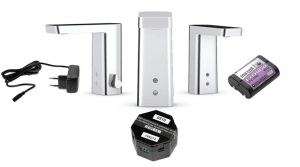
Image Source: Oras Stories
A fixed power supply touchless faucet that plugs directly into an outlet instead of being hard-wired into the wall. This type of touchless faucet isn’t as fancy as some other models, but it does offer all the benefits of a standard touchless faucet without requiring any installation work on your part.
The fixed power supply faucet is one that is connected to the home’s water supply line and does not have a separate power source. The faucet’s handle is used to control the flow of water, but there is no pressure control. This type of faucet is often used in older homes where there isn’t enough room for a separate hot and cold water supply line and a traditional faucet.
Battery Operated Power Faucet
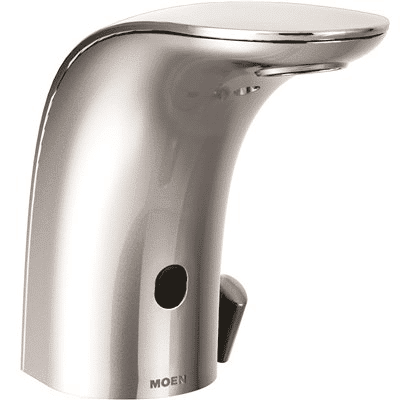
Image Source: Ebarnet
The battery-operated power faucet is a great addition to any home. It comes with a rechargeable battery so you do not have to worry about any wires or cords. It also has an LED light indicator to let you know when it needs charging. It is easy to install and can be used in either the kitchen or bathroom.
The water pressure is adjustable, allowing you to choose how much pressure you want coming out of your faucet. This means that if you are washing dishes or filling pots, you can adjust the pressure so that it does not splash everywhere.
Batteries in the Control Box and Replacement
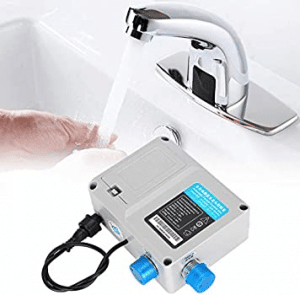
Image Source: Amazon
Batteries in the Battery Box and Replacement
The battery box is designed to fit in a corner of your bathroom, and it’s used as a place for the batteries that power your faucet. Each battery is about half the size of a D-cell battery, and it will last for about a year before you’ll have to replace it.
Replacing a battery is easy, but it’s something you should do during an overnight trip or when you’re not using your camper. The batteries can be stored outside the camper when they aren’t being used, but they should be stored inside if they are going to be stored for more than two weeks.
Batteries in the Touchless Faucets
The batteries in the touchless faucets are connected to a sensor that detects when someone is in front of it and automatically turns on the water. The batteries should last for at least two years if you use your faucet as often as one or two times per day, and you can get replacements from your local hardware store.
If you don’t use it that often and leave it on, the battery will probably go dead in six months or less. When the batteries run down, you’ll notice that your faucet won’t work anymore. You may also see an error light blinking on the side of your faucet.
Do Touch Faucets Require Electricity?
Touch faucets don’t require electricity to operate. They use a sensor to detect the presence of your hand, so you can turn on the water without touching anything. The sensor is usually located in the handle of the faucet, which opens and closes with a slight touch.
Touch faucets are convenient for people who have arthritis or other conditions that make it difficult to grasp handles, twist knobs and turn taps. They’re also good alternatives for children’s bathrooms, where adult-sized faucets may be too tall or difficult for kids to reach.
Some touch faucets have manual override buttons on the handle or base of the fixture, which allow you to manually turn off the water when needed — even if there’s no one else in the house who needs access to it.
Touch VS Touchless Faucet: Which Faucet Option is Better Option to Save Costs in Electricity
Touchless faucets are also more energy efficient than conventional touch faucets as they do not use any power to open or close the spout. The only time they need electricity is when they are being installed, but after that they can be used without consuming any energy at all. This means that over time you will be able to save a lot of money on your electricity bills, compared to using a conventional touch faucet which uses electricity every time you turn it on or off.
